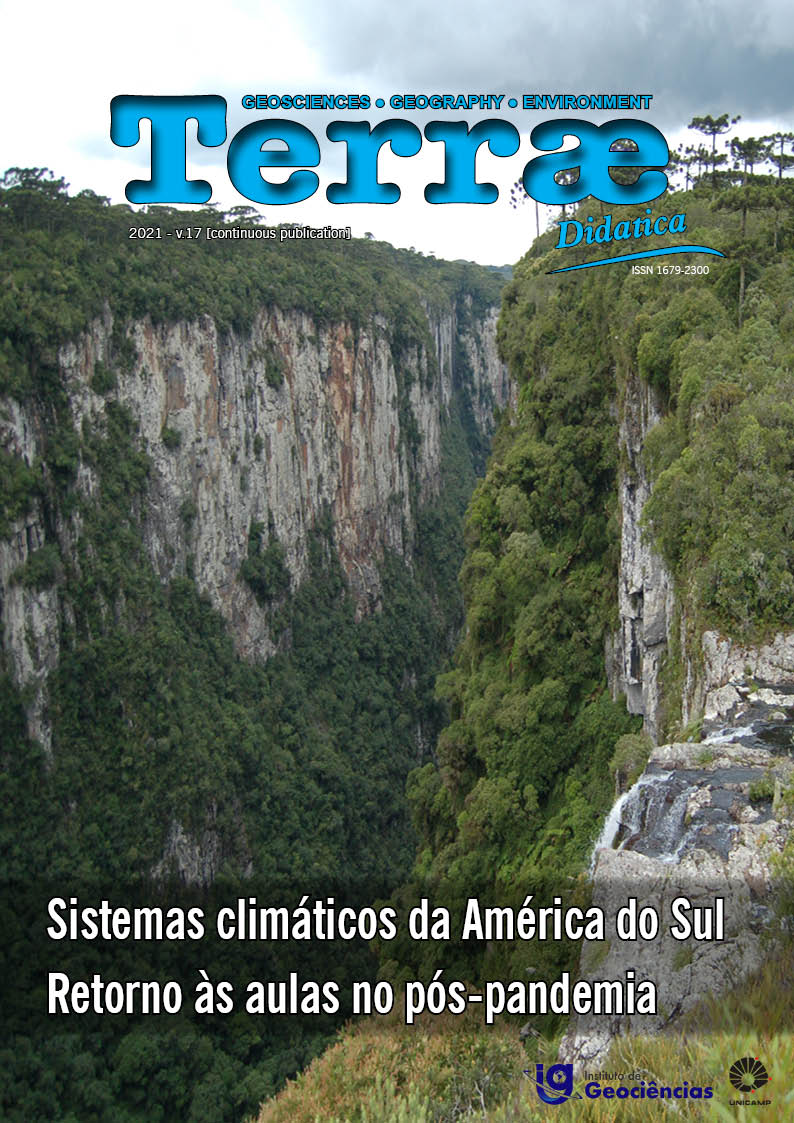Abstract
The fight against the popular belief about the widespread presence of underground rivers and lakes is addressed by formal education through the early introduction of the aquifer concept. Knowledge of the hydraulic parameters (porosity, permeability, etc.) is necessary for the correct understanding of the behavior of geological materials as such water reservoirs. At this stage, in addition to adequate basic information, an experimental visualization of what these parameters represent is necessary to achieve a full understanding of the subject. Generally, when experiments are carried out at school, measurements are made with different devices and materials and in a non-integrated way, what works against the construction of an integrated conceptual model by the student. A simple activity (and inexpensive in terms of the necessary equipment) is proposed so that students can perceive how the hydraulic parameters are linked to each other and observe the hydraulic behavior of different geological materials.
References
Ben-Zvi Assaraf, O. & Orion, N. (2005). A study of junior high students´ perception of the water cycle. Journal of Geoscience Education, 53(4), 366-373. doi: 10.5408/1089-9995-53.4.366.
Ben-Zvi Assaraf, O., Orion, N., Ben Menajem, O., Yardén, A., Ronen, D. & Lemcoff, J.H. (2007). El Planeta Azul, el Ciclo del Agua en los Sistemas Terrestres. Instituto Weizman. Israel. 262p.
Castaño, S., Moreno, L., de la Losa, A., Aguilera, H., Jiménez, M.E. & Mediavilla, R. (2008). Evaluación de pérdidas de agua y parámetros hidráulicos mediante ensayos de infiltración en campo. Enseñanza de las Ciencias de la Tierra. 16(1), 64-71. Disponível em: https://www.raco.cat/index.php/ECT/article/view/120988. Acesso 6.01.2021.
Castilho-Barbosa, I. N. B., Carvalho, A. M., Miguel, G. F. & Carneiro, C. D. R. (2020). Conhecer para conservar aquíferos: como torna-los visíveis? Terræ Didatica, 16(1), 1-12, e020018. doi: 10.20396/td.v16i0.8658299.
Davis, K. S. & Day, J. A. 1971. Agua, espejo de la ciencia. EUDEBA, Buenos Aires, 218 págs.
de Miguel, A., Lado, J. J., Martínez, V., Leal, M. & García, R. 2009. El ciclo hidrológico: experiencias prácticas para su comprensión. Enseñanza de las Ciencias de la Tierra, 17(1), 78-85. Disponível em: https://www.raco.cat/index.php/ECT/article/view/184048. Acesso 6.01.2021.
De Wet, A.P. 1994. Integrating field observations with physical and computer models in an introductory environmental Geology course. Journal of Geoscience Education, 42 (3): 264-272. Disponível em: https://serc.carleton.edu/resources/39515.html. Acesso 6.01.2021.
Dickerson, D., Callahan, T.J., van Sickle, M. & Hay, G. 2005. Students´ conceptions of scale regarding ground water. Journal of Geoscience Education, 54 (4): 487-490. doi: 10.5408/1089-9995-53.4.374.
Gates, A.E., Parker Langford, R., Hodgson, R.M., & Driscoll, J.J. 1996. Ground water-simulation apparatus for introductory and advanced courses in Environmental Geology. Journal of Geoscience Education, 44(5), 559-564. doi: 10.5408/0022-1368-44.5.559.
Hudak, P.F., 2001. Creased plastic-rock permeameter for Hydrogeology students. Journal of Geoscience Education, 49 (2), 182-186. doi: 10.5408/1089-9995-49.2.182.
King, C., Kennett, P., Devon, E. & Sellés Martínez, J., 2009. Earthlearningidea: nuevos recursos para la Enseñanza de las Ciencias de la Tierra en todo el mundo. Enseñanza de las Ciencias de la Tierra, 17(1), 2-15. Disponível em: https://www.raco.cat/index.php/ECT/article/view/183787. Acesso 6.01.2021.
Márquez, C. & Bach, J. 2007. Una propuesta de análisis de las representaciones de los alumnos sobre el ciclo del agua Enseñanza de las Ciencias de la Tierra, 15(3), 280-286. Disponível em: https://www.raco.cat/index.php/ECT/article/view/121419. Acesso 7.01.2021.
Meléndez Hevia, I. 2009. La dinámica de sistemas complejos en las ciencias de la tierra y del medio ambiente. Enseñanza de las Ciencias de la Tierra. 17(1), 26-36. Disponível em: https://www.raco.cat/index.php/ECT/article/view/184043. Acesso 7.01.2021.
Nichol, M.J. & Scott, G.F. 2000. Teaching Darcy´s Law through hands-on experimentation. Journal of Geoscience Education, 48(2), 216-221. doi: 10.5408/1089-9995-48.2.216.
Passey, B.H., T. E. Cerling & M.A. Chan, 2006. Dam Fun. A Scale Model Classroom experiments for teaching basic concepts in Hydrology and Sedimentary Geology. Journal of Geoscience Education, 54(4), 487-490. doi: 10.5408/1089-9995-54.4.487.
Reyero, C., Calvo, M., Vidal, M.P., García, E. & Morcillo, J.G. 2007. Las ilustraciones del ciclo del agua en los textos de educación primaria. Enseñanza de las Ciencias de la Tierra, 15(3), 287-294. Disponível em: https://raco.cat/index.php/ECT/article/view/121420. Acesso 7.01.2021.
Rich, C.C. & C.M. Onasch, 1997. An introductory Geology Laboratory exercise on ground water pollution potential using the DRASTIC System. Journal of Geoscience Education, 45 (5): 404-411. doi: 10.5408/1089-9995-45.5.404.
Warner A. & S.R. Roof, 1994. Using Darcy Flow Tubes to teach concepts of ground water geology. Journal of Geoscience Education, 42 (3): 220-224. doi: 10.5408/0022-1368-42.3.220

This work is licensed under a Creative Commons Attribution-NonCommercial 4.0 International License.
Copyright (c) 2021 José Sellés-Martínez


